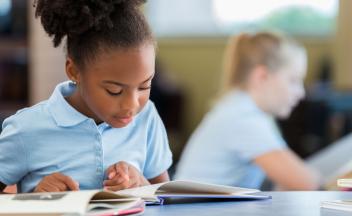To help students become stronger readers, one factor is key — providing access to high-quality texts that meet students’ needs and interests. In this section, you’ll find information about how to choose and use a wide variety of texts for the classroom as well as how to set up a welcoming, diverse classroom library.
Decodable Texts
Explore the use of decodable texts — books that use lots of words and patterns that can be easily matched with the phonics skills that your students are learning. These books are great for beginners who need practice with segmenting and blending sounds to read words.
Picture Book Read Alouds
Using picture books as read alouds can also support budding phonemic awareness and phonics skills. Talking about the illustrations and listening to the rich language can help students notice rhymes, syllables, onset and rime, and other sound patterns. Picture books also expose students to new vocabulary and topics.
Introducing Complex Text
How do we choose the right book at the right time for our students? Research supports using longer and more complex texts at around grade 2. Complex texts have more challenging vocabulary, as well as longer, more complex sentences and content than the early texts that students learn to read.
Complex texts help children develop their comprehension, stamina, and critical thinking skills. Complex texts can be fiction or nonfiction, and may cover a range of topics and genres. Some examples of complex texts in grades 2 and 3 include Charlotte’s Web, The One and Only Ivan, and The Magic School Bus series.
